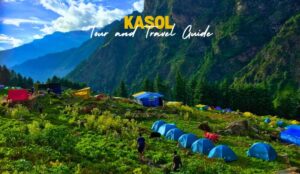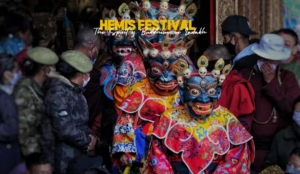“Discover enchantment at Askot Musk Deer Sanctuary 🌿🦌 Unveil the beauty of wildlife and nature in our latest blog. #AskotMuskDeerSanctuary”
Askot Musk Deer Sanctuary:
About of Askot Musk Deer Sanctuary
Nestled within the heart of the Himalayas, the Askot Musk Deer Sanctuary stands as a testament to the harmonious coexistence of wildlife and nature. This sanctuary, located in the Pithoragarh district of Uttarakhand, India, offers a sanctuary of exquisite biodiversity and pristine landscapes. As you explore its unique features and ecological significance, you embark on a journey that connects you with the untouched beauty of nature.
Unveiling the Sanctuary’s Splendor
Geographical Location: The Askot Musk Deer Sanctuary is situated in the Pithoragarh district of Uttarakhand, India, encompassing an area of natural marvels.
Flora and Fauna Diversity: The sanctuary boasts a diverse array of flora and fauna, making it a haven for nature enthusiasts. Among its notable inhabitants is the elusive musk deer, which plays a vital role in the ecological balance of the region.
Musk Deer Significance: The presence of musk deer, known for its valuable musk pod, signifies a healthy ecosystem. These remarkable creatures contribute to the sanctuary’s unique charm and highlight its commitment to wildlife conservation.
Exploring the Sanctuary’s Wonders
Wildlife Variety: Beyond the musk deer, the sanctuary shelters an impressive variety of wildlife. Leopards, Himalayan black bears, ghoral, and a rich avian population thrive within its boundaries, creating a tapestry of life rarely seen elsewhere.
Breathtaking Landscapes: The sanctuary’s landscapes are a testament to nature’s artistry. Lush forests, verdant meadows, and pristine water bodies compose a symphony of beauty that captures the hearts of all who visit.
Ecological Balance: The Askot Musk Deer Sanctuary plays a crucial role in maintaining the ecological balance of the Himalayan region. It serves as a safe haven for its inhabitants and contributes to the preservation of biodiversity.
History of Askot Musk Deer Sanctuary:
The Askot Musk Deer Sanctuary, nestled amidst the Himalayas in the Pithoragarh district of Uttarakhand, India, carries a historical journey that echoes the preservation of nature and the delicate balance of ecosystems. This sanctuary, rooted in history, offers a sanctuary for wildlife and a testament to conservation efforts. As we delve into its historical significance, we uncover the threads that connect past, present, and future in this natural haven.
Unveiling the Historical Chapters
Early Recognition: The historical significance of the Askot Musk Deer Sanctuary dates back to its establishment in 1986. Recognizing the need to protect and conserve the delicate ecosystem of the region, the sanctuary was created to provide a safe haven for diverse species.
Regal Legacy: The sanctuary’s history intertwines with tales of royalty and reverence for nature. The region’s historical association with the Kumaon dynasty adds a regal touch to the sanctuary’s origins, where nature and heritage merge.
Conservation Initiatives: Throughout its history, the Askot Musk Deer Sanctuary has been a focal point of conservation efforts. Its establishment aimed not only to safeguard the musk deer population but also to create an environment where various species could thrive without the pressures of urbanization.
Echoes of History in the Present
Evolving Conservation: Over the years, the sanctuary’s history has paved the way for evolving conservation strategies. Efforts to protect and preserve the sanctuary’s biodiversity continue to shape its management and policies.
Ecotourism and Awareness: The historical journey of the Askot Musk Deer Sanctuary has led to the rise of eco-tourism and awareness initiatives. Visitors and locals alike are now engaged in the sanctuary’s history and conservation efforts, contributing to its sustainable future.
Educational Significance: The sanctuary’s history serves as an educational tool, highlighting the importance of preserving fragile ecosystems. It inspires future generations to value and protect the natural world.
Things to Do in Askot Musk Deer Sanctuary:
Nestled in the pristine beauty of Uttarakhand, Askot Musk Deer Sanctuary offers a range of engaging activities for nature enthusiasts and wildlife lovers. Here’s a guide to make the most of your visit:
- Wildlife Spotting: Traverse through the sanctuary’s lush landscapes and keep your eyes peeled for the elusive musk deer, the sanctuary’s star inhabitant. You might also encounter other native species like leopards, Himalayan black bears, and a variety of birdlife.
- Nature Walks: Immerse yourself in the serenity of the sanctuary with guided or self-guided nature walks. The trails meander through dense forests, alpine meadows, and gentle streams, offering a chance to connect with nature.
- Photography: Capture the breathtaking beauty of the sanctuary’s flora and fauna. From majestic deodar trees to the delicate blooms, every frame is a testament to the sanctuary’s natural diversity.
- Birdwatching: The sanctuary is a haven for birdwatchers, with a diverse avian population. Set out with binoculars and spot vibrant species like Himalayan monals, pheasants, and a variety of thrushes.
- Village Exploration: Engage with the local communities that coexist with the sanctuary. Gain insights into their traditional lifestyles, learn about their connection with nature, and perhaps even savor some regional delicacies.
- Educational Tours: If offered, take part in guided educational tours. Learn about the sanctuary’s conservation efforts, its role in preserving biodiversity, and the challenges faced by the wildlife.
- Picnicking: Find a tranquil spot within the sanctuary and enjoy a leisurely picnic amidst nature’s embrace. The serene ambiance and the sounds of the forest create an ideal backdrop for relaxation.
- Vantage Points: Seek out vantage points that offer panoramic views of the sanctuary and the surrounding landscapes. Gaze upon the undulating hills, valleys, and the distant snow-capped peaks.
- Camping: If allowed, camping within the sanctuary can be a memorable experience. Spend the night under the stars, surrounded by the soothing sounds of the wilderness.
- Responsible Tourism: Above all, practice responsible and eco-friendly tourism. Respect the sanctuary’s rules, refrain from disturbing the wildlife, and leave behind only footprints.
Why Askot Musk Deer Sanctuary is Famous
Unique Musk Deer: One of the primary reasons for the sanctuary’s fame is its role in the conservation of the elusive musk deer, a species of immense ecological value. The sanctuary provides a safe haven for these creatures, contributing to their survival and the preservation of their habitat.
Biodiversity Haven: The sanctuary’s reputation extends beyond musk deer to encompass a rich diversity of flora and fauna. Its unique ecosystems house various species, including leopards, Himalayan black bears, ghoral, and a plethora of avian life, making it a hotspot for wildlife enthusiasts.
Scenic Landscapes: The sanctuary’s awe-inspiring landscapes, characterized by lush forests, meadows, and serene water bodies, further enhance its fame. The natural beauty of the Himalayas envelops the sanctuary, inviting visitors to witness nature’s artistry.
Things to Know about Askot Musk Deer Sanctuary
Conservation Focus: One of the most critical aspects to know about the sanctuary is its unwavering commitment to wildlife conservation. The sanctuary’s history and efforts revolve around creating a safe habitat for various species, contributing to the delicate balance of the Himalayan ecosystem.
Ecotourism Opportunities: The sanctuary offers more than just a sanctuary for wildlife; it provides a platform for ecotourism and nature-based activities. Visitors can explore the sanctuary’s beauty, engage in educational experiences, and contribute to its preservation.
Cultural Significance: Embedded in the sanctuary’s allure is its historical connection with the Kumaon dynasty. This regal association adds a layer of cultural significance, bridging heritage and nature.
Why You Should Visit Askot Musk Deer Sanctuary
Wildlife Encounters: A visit to the Askot Musk Deer Sanctuary promises unforgettable wildlife encounters. The sanctuary’s fame lies in its role as a haven for the elusive musk deer and a myriad of other species, offering you the opportunity to witness these creatures in their natural habitat.
Eco-Tourism Gem: For nature enthusiasts, the sanctuary is an eco-tourism gem. Engage in activities such as bird watching, trekking, and nature walks that not only connect you with the environment but also contribute to its preservation.
Breathtaking Landscapes: The sanctuary’s scenic landscapes, adorned with lush forests, tranquil meadows, and glistening water bodies, create a canvas of beauty that soothes the soul and provides a backdrop for your explorations.
Best Time to Visit Askot Musk Deer Sanctuary
Spring Awakening (April to June): During spring, the sanctuary comes alive with vibrant blooms and pleasant weather. This is an ideal time to witness the lushness of the Himalayan flora and spot various wildlife species.
Monsoon Mystique (July to September): While the monsoon season brings rain, it also adds a mystical aura to the sanctuary. The landscapes are washed clean, and the mist-covered surroundings create a serene ambiance.
Autumn Charms (October to November): As autumn sets in, the sanctuary dons a tapestry of warm hues. The weather remains pleasant, making it another excellent time to explore the sanctuary.
Winter Wonder (December to February): If you’re a fan of snow-covered landscapes, winter is your time. The sanctuary transforms into a winter wonderland, offering a unique perspective on its beauty.
How to Reach Askot Musk Deer Sanctuary
Starting Point: Your journey to the Askot Musk Deer Sanctuary begins in the picturesque state of Uttarakhand, known for its Himalayan landscapes.
Travel to Pithoragarh: Commence your journey by traveling to Pithoragarh, a charming town in Uttarakhand. This serves as your gateway to the sanctuary.
Roadway Options: From Pithoragarh, you can opt for road transport. Taxis, private vehicles, or local buses are available for the onward journey to the sanctuary.
Trekking Routes: Adventure enthusiasts can embark on trekking routes that lead to the sanctuary. These routes not only provide an immersive experience but also allow you to witness the beauty of the Himalayas up close.
Where is Askot Musk Deer Sanctuary Located
Geographical Context: The Askot Musk Deer Sanctuary is situated in the Pithoragarh district of Uttarakhand, India. It is embraced by the majestic Himalayas, which add to the sanctuary’s allure.
Natural Haven: As you traverse the hilly terrain of Pithoragarh, you’ll find the sanctuary nestled amidst the serene landscapes, offering a sanctuary of natural marvels.
Coordinates: The sanctuary’s geographic coordinates are approximately 29.8167° N, 80.2170° E, placing it firmly within the heart of the Himalayan region.
Places to Eat near Askot Musk Deer Sanctuary
When exploring the enchanting vicinity of Askot Musk Deer Sanctuary, you’ll find a few charming dining options to satisfy your appetite. Here are some places to eat:
- Local Eateries: Discover authentic regional flavors at local eateries. Savor Garhwali dishes like “Aloo Ke Gutke” (spiced potatoes) and “Mandua ki Roti” (finger millet bread) that showcase the essence of Uttarakhand’s cuisine.
- Guesthouse Restaurants: If you’re staying in guesthouses or lodges near the sanctuary, they often offer homemade meals prepared with locally sourced ingredients. Delight in wholesome, home-cooked food.
- Picnic Spots: Pack a picnic and enjoy a meal amidst the natural beauty of the sanctuary’s surroundings. Choose a serene spot by a stream or under the shade of trees for a memorable dining experience.
- Nearby Villages: Explore nearby villages and interact with locals who might offer traditional meals. Engaging with the community can lead to authentic culinary experiences.
- Dhabas: Along the roads leading to the sanctuary, you might come across dhabas (roadside eateries) that serve simple yet flavorful North Indian dishes. Relish classic favorites like parathas, dal, and curries.
- Homestays: If you’re lodging in a homestay, you’ll likely have the chance to dine with the host family. Experience their hospitality and enjoy dishes prepared with love and care.
- Packed Meals: Before embarking on your sanctuary exploration, consider packing a meal or snacks. This ensures you have sustenance during your adventures, especially if you plan to spend extended hours outdoors.
- Cafés in Nearby Towns: If you venture to nearby towns, you might find cafés or small restaurants that offer a variety of cuisines, ranging from Indian to continental dishes.
Top Places to visit nearby Askot Musk Deer Sanctuary
As you venture into the natural haven of the Askot Musk Deer Sanctuary, your exploration doesn’t stop at its boundaries. The sanctuary’s strategic location in Uttarakhand, India, opens doors to nearby destinations that offer their own charms and wonders. Here, we unveil the top places to visit near the sanctuary, enriching your journey with diverse experiences.
Pithoragarh: Gateway to Adventure
Proximity: Pithoragarh, the district headquarters, is a stone’s throw away from the sanctuary. It serves as the gateway to the region’s enchantment.
Historical Significance: Pithoragarh boasts a rich historical legacy, housing ancient temples and monuments that reflect the region’s cultural tapestry.
Nature’s Bounty: Surrounded by the Himalayas, Pithoragarh offers stunning vistas, from lush valleys to snow-capped peaks, making it a paradise for nature lovers.
Munsyari: Enveloped in Scenic Beauty
Distance: A scenic drive from the sanctuary takes you to Munsyari, a charming town known for its panoramic views.
Panchachuli Peaks: Munsyari is famous for offering breathtaking views of the Panchachuli Peaks, a collection of five snow-capped Himalayan peaks.
Trekking Hub: Adventure enthusiasts can embark on treks that lead to glaciers, meadows, and high-altitude lakes, immersing themselves in the rugged beauty of the Himalayas.
Dharchula: Along the Kali River
Riverside Charm: Dharchula, situated along the Kali River, is a picturesque town where you can relax by the riverbanks and soak in the tranquility.
Ancient Temples: The town houses ancient temples that hold spiritual significance, offering a blend of culture and serenity.
Border Connection: Dharchula’s proximity to the Indo-Nepal border adds a unique touch, allowing you to witness border-town dynamics.
Berinag: Tea Gardens and Beyond
Tea Gardens: Berinag, known for its tea gardens, is a destination of leisure. Stroll through the tea estates and savor the aroma of freshly plucked leaves.
Viewpoints: The town offers viewpoints that provide panoramic views of the Himalayan peaks, creating a picturesque backdrop.
Spiritual Abode: Berinag also boasts ancient temples, adding a spiritual touch to its serene landscapes.
Conclusion:
The Askot Musk Deer Sanctuary stands as a testament to the harmonious coexistence of wildlife and nature. With its diverse flora and fauna, including the elusive musk deer, the sanctuary offers an opportunity to witness the beauty of the Himalayan ecosystem. By immersing yourself in its landscapes and understanding its ecological importance, you become a part of the effort to conserve and protect this natural treasure for generations to come.
FAQs:
Where is the Askot Musk Deer Sanctuary located?
The Askot Musk Deer Sanctuary is located in the Pithoragarh district of Uttarakhand, India, nestled amidst the awe-inspiring Himalayas.
What is the significance of the musk deer in the sanctuary?
The musk deer, known for its valuable musk pod, holds ecological importance as a key species in the sanctuary. Its presence indicates a healthy ecosystem.
What other wildlife can be found in the sanctuary?
Apart from the musk deer, the sanctuary is home to a variety of species, including leopards, Himalayan black bears, ghoral, and a rich avian population.
When is the best time to visit the Askot Musk Deer Sanctuary?
The sanctuary is accessible from November to June, with the months of April to June being ideal for spotting wildlife and enjoying pleasant weather.
How can I reach the Askot Musk Deer Sanctuary?
To reach the sanctuary, you can travel to Pithoragarh, the nearest town. From there, roadways and trekking routes lead you to this natural haven, allowing you to experience the beauty of the Himalayas up close.





